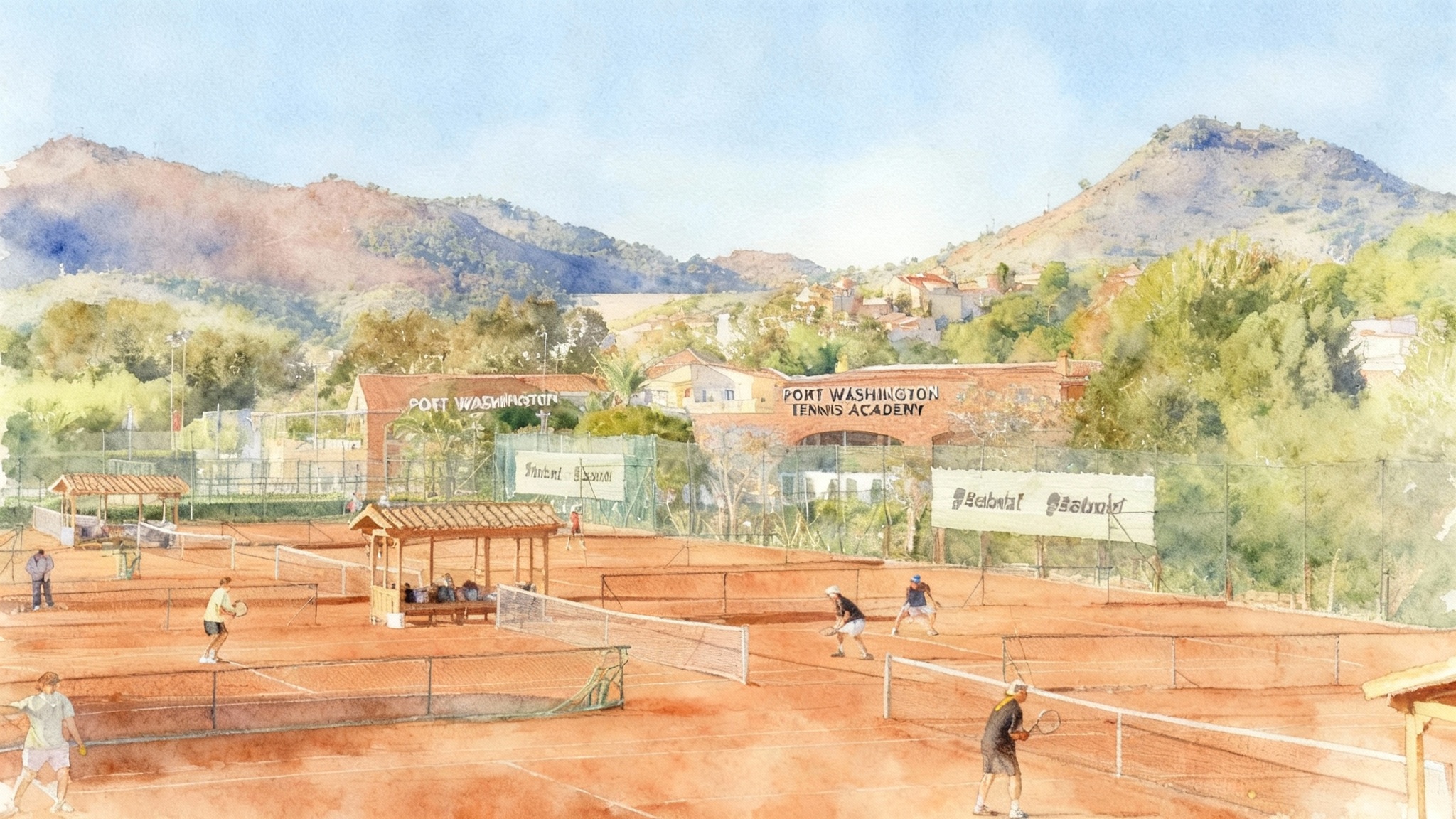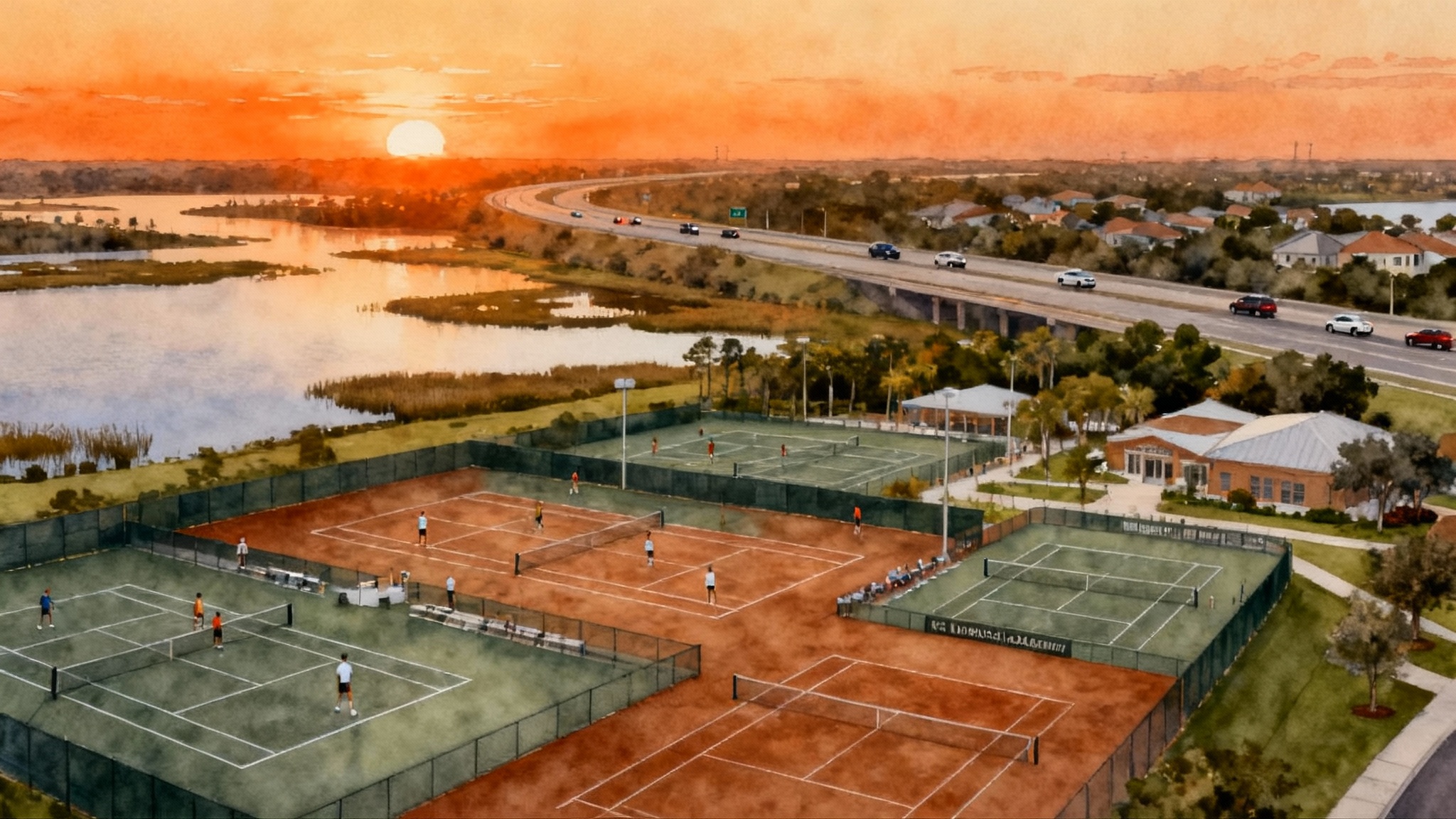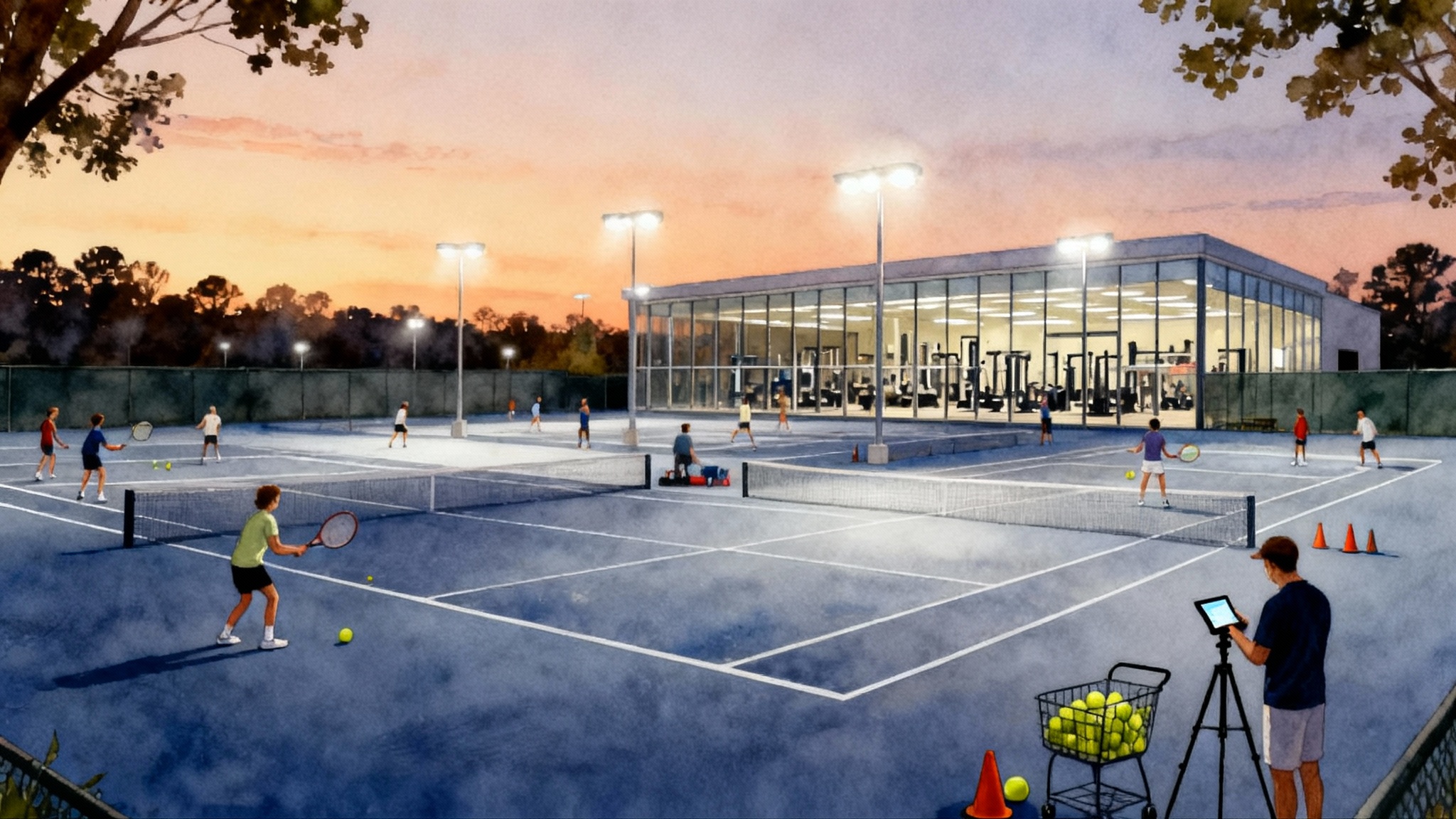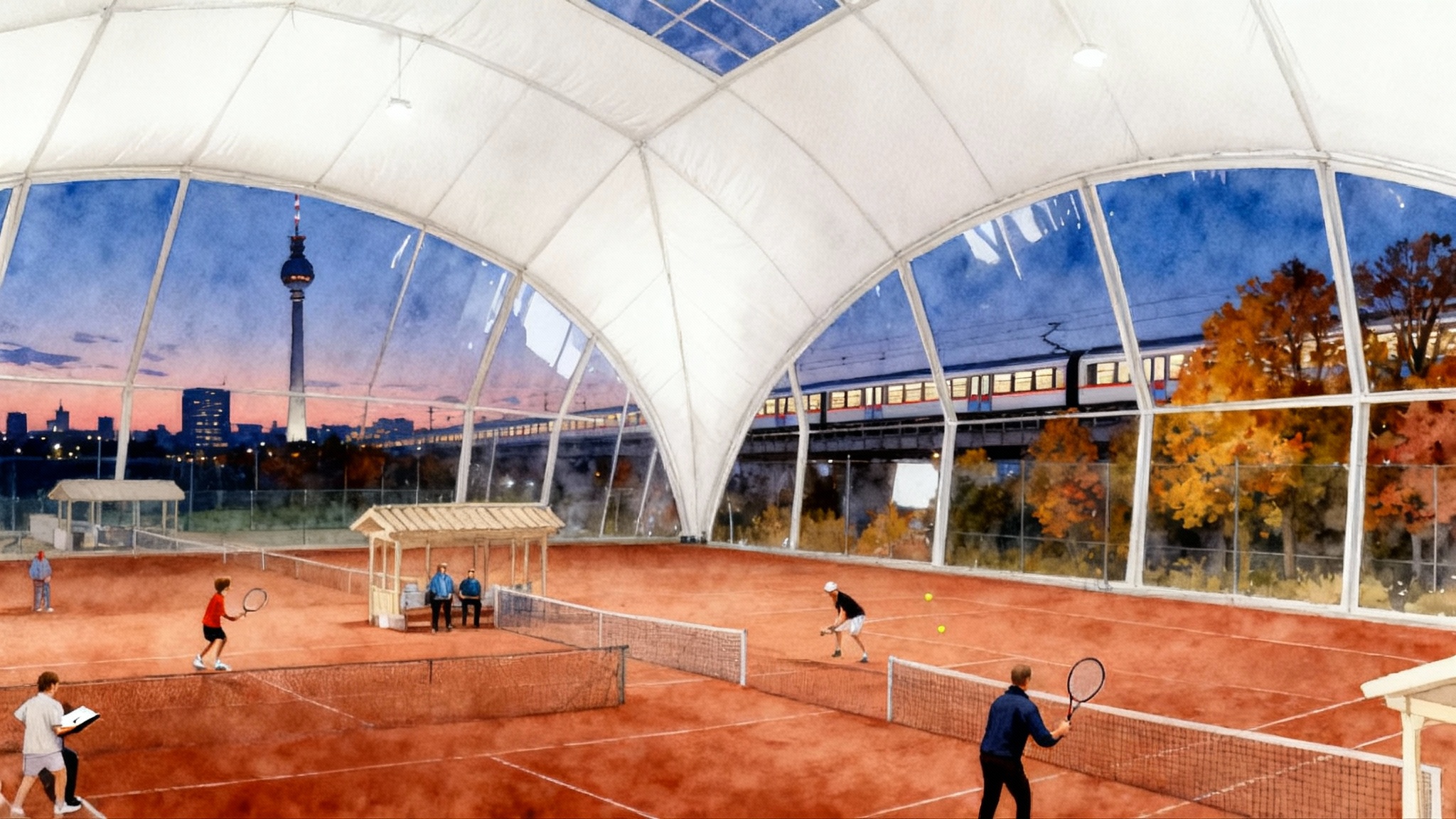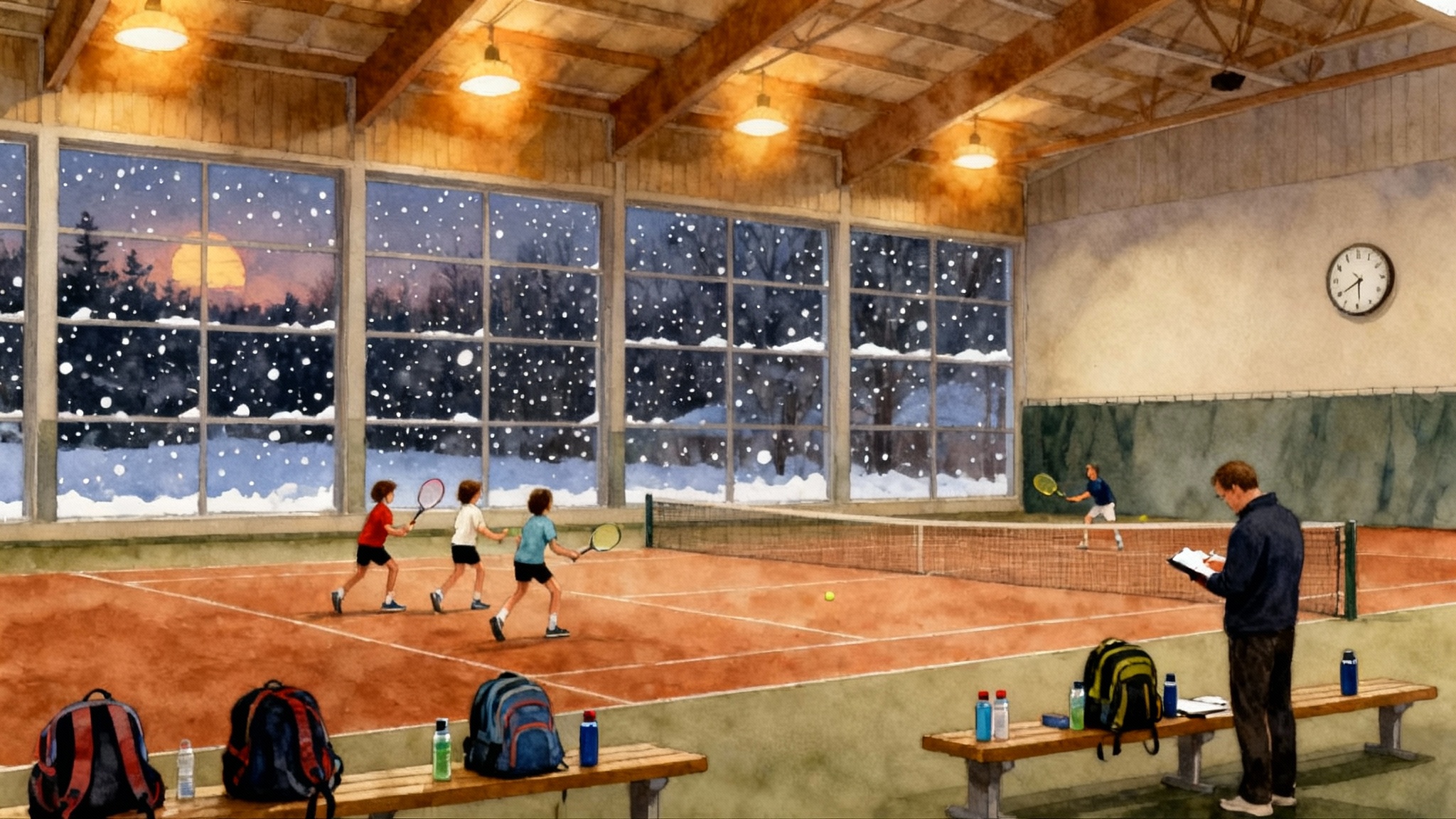Best Texas Tennis Academies 2025–2026: City-by-City Guide
Beat the Texas heat and find the right tennis academy in Austin, Dallas–Fort Worth, Houston, and San Antonio. This buyer's guide compares surfaces, indoor access, summer schedules, boarding, academics, UTR play, and price bands.
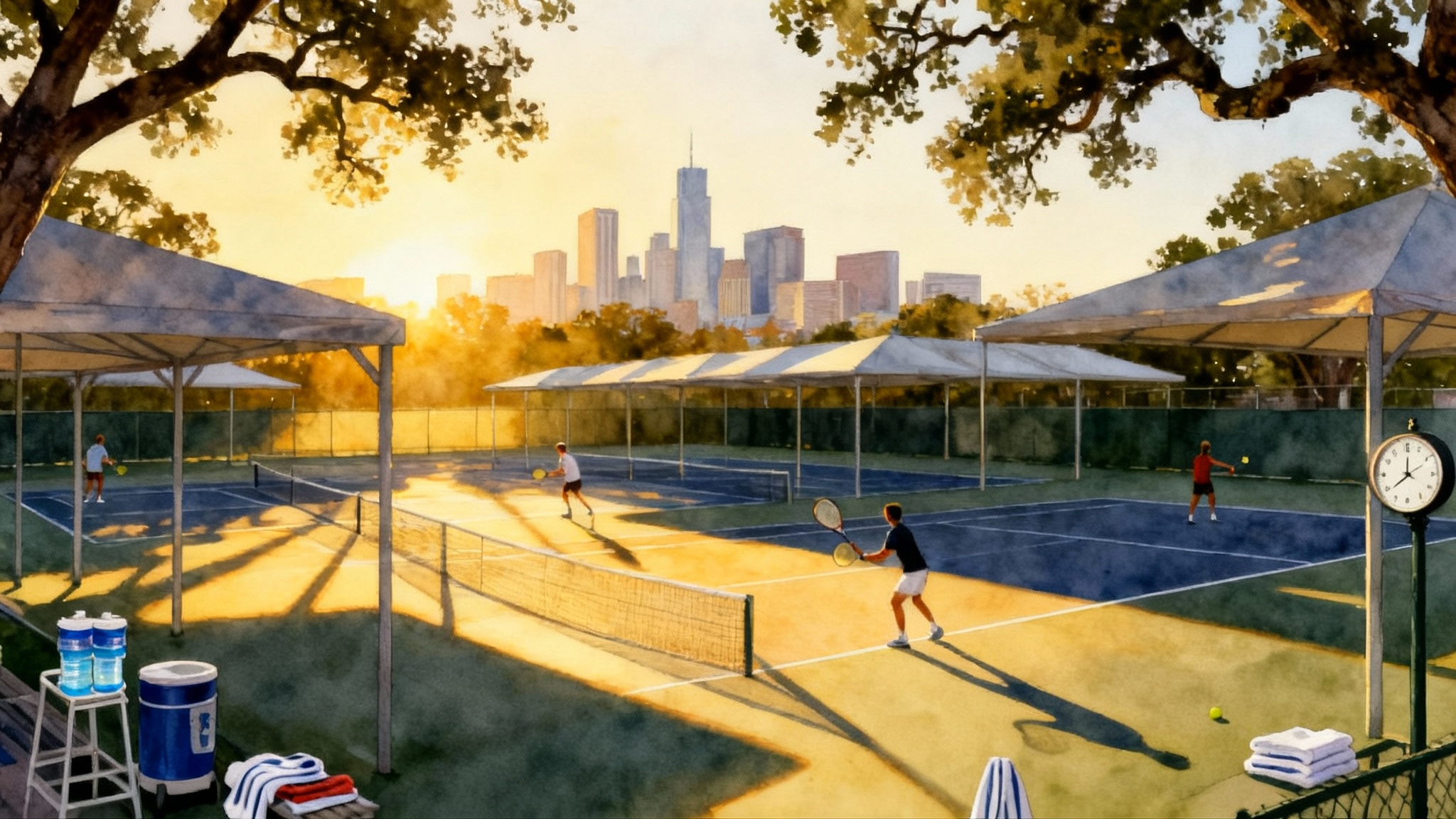
How to use this heat-smart buyer's guide
Texas delivers year-round tennis, but it also delivers serious heat. The best programs know how to train hard and stay safe. This 2025-2026 guide focuses on what actually drives development and value in Austin, Dallas-Fort Worth, Houston, and San Antonio: surfaces, access to shade or indoor courts, summer scheduling, boarding versus day choices, integrated academics, UTR and USTA match play volume, and transparent price bands. Price ranges here reflect typical public listings and conversations with families as of November 2025 and are meant to help you budget and ask sharper questions.
Before you fall in love with a logo, align three things: your athlete's goal, your calendar, and your budget. Then use this guide to shortlist two or three programs to trial. If you are comparing other regions, see our Best Orlando and Lake Nona guide and the Best SoCal Tennis Academies guide.
Quick picks
These are high-confidence starting points based on track records, structure, and fit. Always visit and book a trial week to confirm.
-
Elite juniors chasing Division I or professional pathways
- Austin: St. Stephen's Tennis Academy integrates serious training with a college-prep school and boarding, a rare combination in Texas.
- Dallas-Fort Worth: A top high-performance hub like T Bar M or a comparable DFW program offers deep sparring benches and frequent weekend verified UTR events.
- San Antonio area: John Newcombe Tennis Ranch remains a boarding-centric option with immersive training and tournament travel support.
-
College-prep balance of tennis and academics
- Austin: Austin Tennis Academy offers a structured daily schedule and a known pathway to college placement, with academics often delivered through a partner or on-site learning track.
- Dallas-Fort Worth: Choose a day academy with clear study blocks and written coordination for testing, then add weekend UTR.
-
Adults seeking efficient, heat-smart improvement
- Hill Country and San Antonio: Weekend adult camps deliver high-rep drilling and doubles patterns with morning heavy workloads and afternoon shade blocks.
- Houston: Choose clubs with covered or partially covered courts for summer afternoons, plus evening point-play clinics.
-
Best value when budget matters
- Houston and DFW suburbs often run cost-efficient after-school high-performance blocks and tournament coaching pools that stretch dollars without losing intensity.
For a Southeastern comparison, you can also review the Best Atlanta Tennis Academies guide.
Surfaces and heat-smart setups
Surface mix shapes development as much as the number of hours trained. In Texas, hard courts dominate. Some sites run European red or green clay banks, which are valuable for footwork, point construction, and joint-friendly volume.
What heat-smart setups look like in practice:
- Seasonal time shifts: heavy drilling and fitness early morning, lighter technical or classroom sessions midafternoon, then match play in the evening when the sun drops.
- Shade and airflow: shade canopies, court orientation that avoids direct afternoon glare, and large fans to keep air moving.
- Court selection by phase: clay for longer rallies and recovery after tournament weekends, hard for pace and first-strike patterns on competition weeks.
If your athlete is 14 or under, favor programs that solve the heat with schedule design, not with canceled hours. At 16 to 18, prioritize programs that teach self-management in heat while keeping safety protocols tight.
Indoor and covered access by city
- Austin: Limited true indoor inventory. Expect smart early and late blocks, occasional covered courts, and frequent use of shade structures.
- Dallas-Fort Worth: The best mix of indoor or covered courts in Texas. This matters during summer afternoons and lightning delays. Expect a premium for programs with reliable indoor hours.
- Houston: Humid heat and frequent storms. Covered courts and shade canopies are meaningful. Evening sessions are common.
- San Antonio and Hill Country: Drier heat, significant summer highs. Many boarding programs manage with early starts, long midsay breaks, and evening match blocks.
Ask for a monthly calendar that shows the exact indoor or covered hours you can count on. Do not settle for a generic promise.
UTR and USTA match play volume
College coaches scan verified ratings and ranked results. Verified UTR match nights and weekend events keep a player's data fresh between USTA tournaments. If your athlete is in the college pathway, build a cadence of practice, UTR matches, and USTA events that produces two to three verified results per month outside of heavy tournament stretches.
- Understand the metric: Universal Tennis Rating compresses results across age and gender into a single competitive rating. Read the official overview for how verification works and how results age out in the algorithm in the UTR rating guide.
- Tournament rhythm: In Texas, USTA sections offer a deep calendar across levels, which means you can compete regularly without flying. Map your city hub and drive times, then batch entries around exam weeks. Find sanctioned events via the USTA Texas junior schedule.
Two simple metrics to track monthly:
- Verified match count: target 6 to 10 verified sets per month outside of peak travel months.
- Strength-of-schedule: review expected opponent ratings before you overstuff weekends. One quality draw is better than two weak ones.
Boarding vs day and integrated academics
Boarding programs deliver immersion and save commute time. Day programs can be more flexible and often cost less. For grades 7 to 12, the clincher is how academics are delivered.
- Integrated school on campus: Your child attends classes on the same campus as training. This reduces friction and often improves sleep and nutrition because the day is one ecosystem.
- Partnered online learning: A day academy coordinates with an accredited online school. This can work very well when there is a real academic coordinator who tracks progress and arranges proctored testing.
- Traditional school: Commuting from a neighborhood school to an academy can work if the academy offers late blocks and if your school tolerates early release on tournament Fridays.
Non-negotiables to request in writing:
- Weekly academic timetable with named staff contact
- Test proctoring plan and deadlines
- Tournament absence policy and make-up windows
Transparent price bands for Texas in 2025-2026
Use these bands to compare apples to apples. Programs will sit above or below these figures, but this gives you a budgeting spine.
- Boarding high performance, academic year: 40,000 to 70,000 dollars including tuition and training. Travel, private lessons, and physiotherapy are usually extra.
- Day academy, high performance track: 900 to 1,800 dollars per month for 5-day after-school blocks. Add 60 to 130 dollars per private lesson and 30 to 60 dollars per supervised match session.
- Summer weekly camps, juniors: 800 to 1,800 dollars per week depending on boarding, surface access, and indoor hours.
- Adult weekend intensives: 600 to 1,200 dollars per weekend, often Friday evening to Sunday midday, with 8 to 12 court hours plus video or strategy sessions.
Scholarships and aid exist. Ask about sibling discounts, merit aid for national rankings, and work-study roles like stringing or junior assistant coaching.
City-by-city shortlists and fit notes
Below are practical shortlists to help you map visits. Where possible, we include a likely fit profile, surface notes, and academic options. Use these as prompts for your own questions during a tour.
Austin
-
St. Stephen's Tennis Academy
- Fit: High-achieving juniors who want rigorous academics and daily training in one place, with boarding available. Strong pathway to college tennis through consistent match volume and coach advocacy.
- Surfaces and access: Predominantly hard with some access to softer courts during select blocks. Heat is managed with early morning and evening plays, plus shade.
- Academics: Integrated college-prep school on campus, clear proctoring and teacher communication.
- Who thrives: Self-starters who appreciate structure and a residential community.
-
Austin Tennis Academy
- Fit: College-bound players who want a proven daily program and a culture that emphasizes tournament planning and accountability.
- Surfaces and access: Hard courts, with occasional clay access at partner sites. Heat management via schedule design and shade.
- Academics: Blended solutions using partner schools or on-site study blocks coordinated with staff.
- Who thrives: Players who value personalized tournament calendars and weekly goal reviews.
What to ask in Austin: How many evening verified UTR matches run on-site each month in June through August, and how are court allocations adjusted on 100 degree days?
Dallas-Fort Worth
-
T Bar M High Performance or a comparable DFW high-performance hub
- Fit: Juniors who need a deep practice ladder with frequent college-level sparring and access to indoor or covered backup.
- Surfaces and access: Hard courts, some indoor or covered courts in the network. Reliable storm and heat backup is the key differentiator in DFW.
- Academics: After-school blocks with structured morning options for online learners. Clear tournament travel pods.
- Who thrives: Players ready for high-intensity lanes and routine match metrics review.
-
Brookhaven or Lakes-area high-performance programs
- Fit: Strong sectional players seeking scale and tournament logistics without losing technical oversight.
- Surfaces and access: Hard with some clay options in network. Evening match play is common.
- Academics: Day format that coordinates with online or local schools.
What to ask in DFW: On days above 102 degrees, what moves indoors, what moves under cover, and what is rescheduled? Get it in writing for June through August.
Houston
-
Memorial Park performance programs and comparable west side hubs
- Fit: Developing and advanced juniors who benefit from large player pools and a robust USTA tournament circuit within short drives.
- Surfaces and access: Hard courts with shade and airflow; some sites offer covered courts which are valuable under summer storms.
- Academics: After-school structure with morning blocks for online learners.
-
Giammalva or Chancellors-centered high-performance groups
- Fit: Players who need consistent coaching eyes on core technical elements, and families who want efficient logistics near Spring or southwest Houston.
- Surfaces and access: Hard dominant, occasional clay. Evening match play is typical due to heat and humidity.
What to ask in Houston: How many covered courts are guaranteed during 4 to 7 p.m. in July, and how does the program handle lightning holds without losing total weekly hours?
San Antonio and Hill Country
-
John Newcombe Tennis Ranch and similar boarding-centric programs
- Fit: Juniors who want an immersive boarding environment with travel teams. The setting is ideal for players who benefit from a community rhythm and clearly defined weekly goals.
- Surfaces and access: Predominantly hard, with clay blocks for point construction and joint-friendly volume after tournament weekends.
- Academics: Blended online coordination during the school year, proctored testing on-site.
-
Dominion area and North Side day academies
- Fit: Local families seeking strong coaching continuity with easy access to Hill Country tournament routes.
- Surfaces and access: Hard courts with early and evening programming to dodge peak heat.
What to ask in San Antonio: Show me the sample week for August, including recovery, nutrition windows, and who monitors hydration compliance.
Summer scheduling that works in Texas
Well-run Texas programs look different from June to August. Here is a blueprint to look for and to request if it is not spelled out.
- Morning: 7:00 to 10:30 a.m. heavy workloads. Serve reps, footwork, and point construction on clay or slow hard courts.
- Midday: Classroom training, film review, scouting reports, school coursework, strength and mobility in air-conditioned space.
- Late day: 6:00 to 8:30 p.m. match play blocks with verified results when possible.
- Weekend: Saturday morning tournament play or match ladder. Sunday recovery, mobility, and stringing clinic.
If a program cannot show you this level of detail, keep looking. The heat is predictable. Plans should be too.
What to evaluate on a visit
- Surfaces and court map: Count shaded courts and note where wind moves across the facility. Ask to hit at 2 p.m. to test glare and bounce.
- Coaching eyes: Who films serves weekly, who runs the camera, and when is analysis returned?
- Player ladder: Ask to see the practice ladder. Look for a realistic mix of slightly stronger, even, and slightly weaker sparring.
- Verified matches: How many club-run verified UTR events are scheduled in the next 60 days?
- Academic plan: Name the proctor, ask how exams are protected before major tournaments.
- Travel pods: Who drives and coaches at USTA events, and what is the coach-to-player ratio?
A sample week for a college-prep junior
- Monday: 7:00 a.m. movement and serve, 8:00 to 10:00 drilling, 1:00 to 3:00 academics, 6:30 to 8:30 match ladder
- Tuesday: 7:00 to 9:30 patterns and plus-one forehand work, midday strength and mobility, evening doubles plays
- Wednesday: Clay day for point building, 90-minute film room, short handle speed session
- Thursday: Return games and second-serve pressure sets, academics early afternoon
- Friday: Tournament prep, 60 minutes of serve plus first ball patterns, pack and stretch
- Saturday: USTA draw or club-verified matches
- Sunday: Recovery, hydration check, light hit or complete rest based on load
This rhythm supports both growth and freshness without grinding the athlete down in midday heat.
Budget planning and hidden costs to watch
- Private lessons: Expect 60 to 130 dollars per hour. Ask for a 10-pack rate and how film review is integrated.
- Stringing: 18 to 35 dollars plus string. Heavy hitters should budget weekly.
- Tournament travel: Fuel, hotel, coach day rates, meals. Ask for a written estimate for a typical USTA weekend.
- Physiotherapy and recovery: Some programs include basic screening. If not, set aside a monthly line item.
Create a 12-month budget that smooths summer spikes. A simple approach is to divide estimated annual spend by 12 and auto-transfer that amount into a dedicated tennis account each month.
Action checklist before you sign
- Demand a written weekly schedule for summer and school months, with heat contingencies.
- Confirm indoor or covered access by hour, not just by claim.
- Map the UTR and USTA calendar for the next 90 days and pre-register. Protect exam weeks.
- Sit in on one video review session. Quality here correlates with improvement speed.
- Get a trial week. Measure total court hours, enjoyment, and energy the next morning.
- Ask for two parent references with similar goals and school situations.
- Negotiate transparency. You want pricing, travel rates, and stringing turnaround times in writing.
The bottom line
Texas offers depth, variety, and sunshine. The winners for your family will be the programs that treat heat as a design constraint, not a surprise, and that balance surfaces, verified competition, and school demands week after week. Start with the quick picks in your city, ask precise questions about indoor or covered hours and UTR cadence, and insist on a written calendar that matches your life. Get those fundamentals right and the state that bakes the afternoons will build the resilience, decision making, and repetition that college coaches recognize from the first warmup ball.

